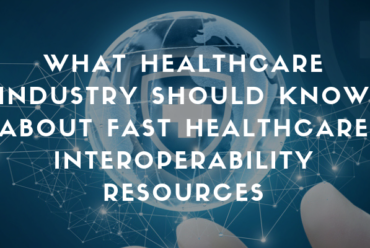The Fast Healthcare Interoperability Resource, commonly known as FHIR, has quickly become one of the most popular protocols for joining disparate systems together and holds great promise for the development of an application-based approach to interoperability and health information exchange.
As health data interoperability becomes an increasingly pressing concern for providers, developers and vendors are paying a great deal more attention to the data standards that will enable seamless, on-demand information exchange.
What is FHIR?
Fast Healthcare Interoperability Resources (FHIR) is an interoperability standard for the electronic exchange of healthcare information. FHIR was developed by Health Level Seven International (HL7), a not-for-profit organization accredited by the American National Standards Institute that develops and provides frameworks and standards for the sharing, integration, and retrieval of clinical health data and other electronic health information.
Why FHIR is important?
As health IT and electronic health records continued to be plagued by interoperability problems, FHIR emerged in 2014 as a draft standard for trial use to enable health IT developers to more quickly and easily build applications for EHRs and to exchange and retrieve data faster from applications.
While FHIR at first was a somewhat experimental project for HL7, it quickly acquired support from even fiercely competitive for EHR vendors.
How FHIR works and what’s an FHIR resource?
- FHIR frameworks are built around the concept of resources basic units of interoperability and modular components that can be assembled into working systems to try to resolve clinical, administrative and infrastructural problems in healthcare.
- FHIR provides software development resources and tools for administrative concepts such as patients, providers, organizations and devices, as well as a variety of clinical concepts including problems, medications, diagnostics, care plans, and financial issues, among others.
Unlike HL7’s most widely used formal standard (also called HL7), FHIR is designed specifically for the web and provides resources and foundations based on XML, JSON, HTTP, Atom and OAuth structures. Tools can be reused to improve interoperability to retrieve the history of a specific resource or a specific version.
The HL7 organization
HL7 is an international organization with members in more than 50 countries. Leaders of the organization have complained that some bigger members, including vendors and healthcare providers, have failed to adequately support HL7’s standards development work, particularly in regard to FHIR.
HL7 develops new standards using a multiyear balloting system in which members vote and add commentary in successive balloting rounds until negative comments are eliminated, draft standards, draft standards for trial use and formal standards are commonly agreed upon.
FHIR is designed to do great things for health IT. Despite a few limitations around the standard, the benefits it brings will make it a standard that is here to stay. As long as you are aware of what FHIR is built to do and what it isn’t built to do, you will be able to find solutions in the marketplace that compliment FHIR to meet your data and solution needs.
Contact us for more information on FHIR and Stay connected with on Facebook and LinkedIn


